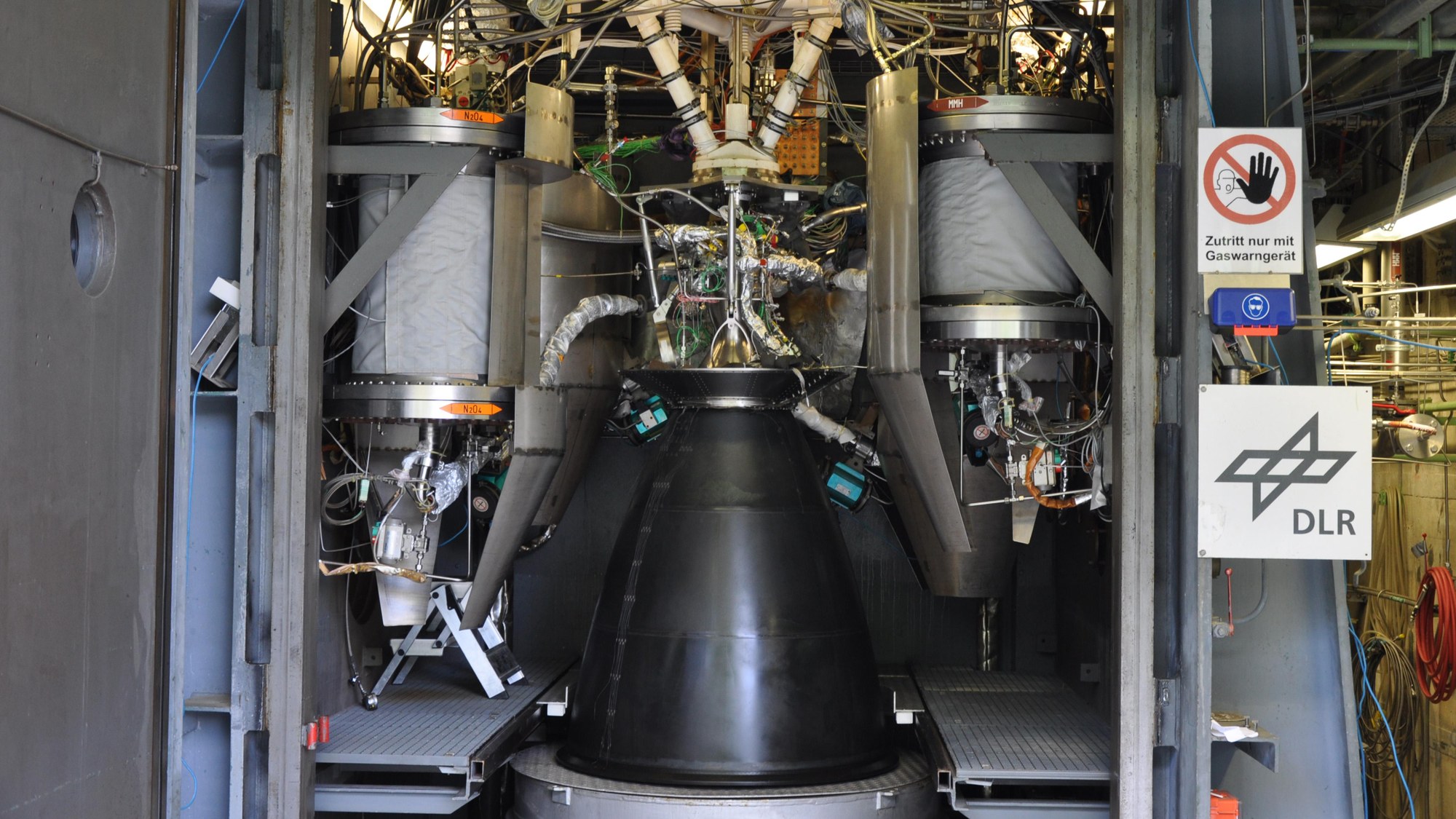Engine testing at DLR
Engine testing at DLR
In order to ensure these manoeuvres go smoothly, the Aestus engine was tested for the current flight in the European Space Agency (ESA) P4.2 high-altitude test rig at the DLR site in Lampoldshausen with a total of eight ignition tests and a long duration test, followed by a re-ignition three years before launch. Since the engine was newly produced for the Galileo launches, a so-called ‘Ariane Research and Technology Accompaniment’ (ARTA) campaign ensured this flight acceptance. For this purpose, a total of 115 ignition tests were carried out, in addition to a test profile with a long heat flow and a brief re-ignition after a simulated, propulsion-less free-floating phase. Finally, four further long duration tests followed with four re-ignitions.

